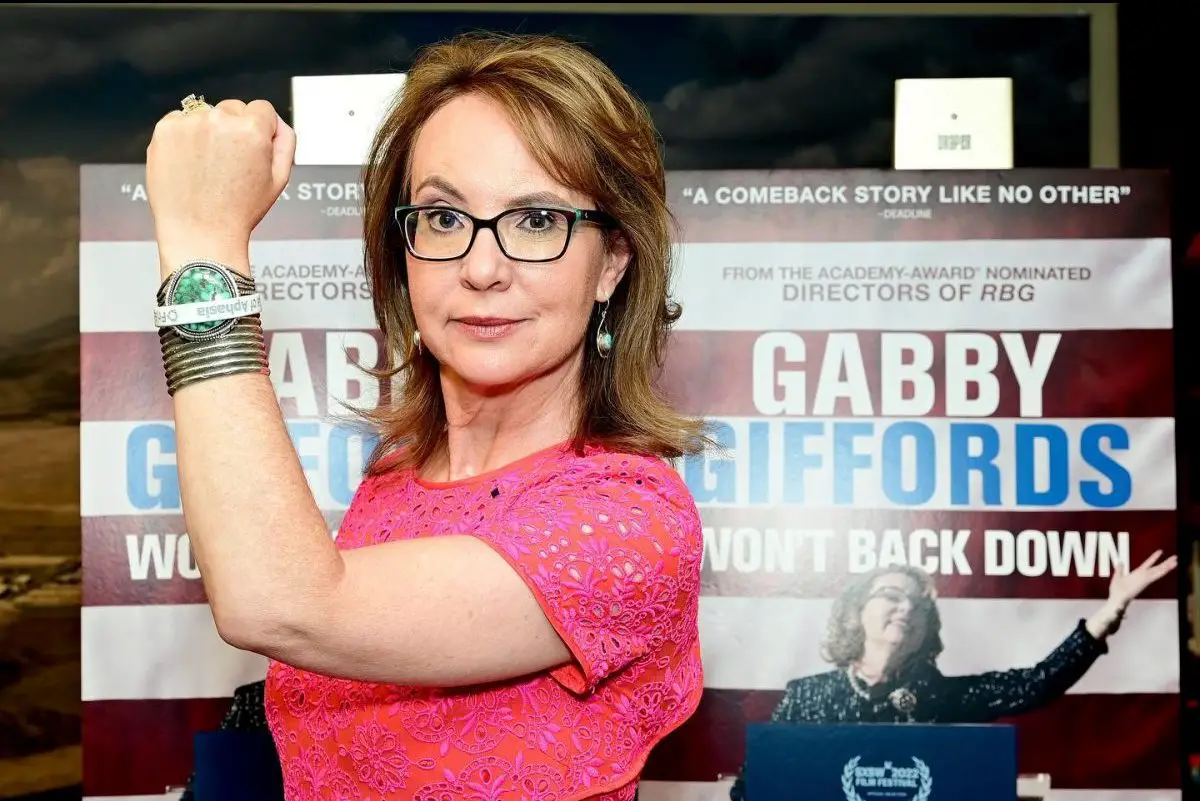In January of 2011, United States Representative Gabby Giffords went to a Safeway store just outside of Tucson, Arizona. At the time, she was a congresswoman representing the 8th Congressional District of Arizona, and she was there to meet with her constituents, providing them with an opportunity to speak to her directly.
While the event — called “Congress On Your Corner” — was in progress, a man with a pistol approached the gathering and opened fire. Six people were killed that day, and another 14 were injured. One of the 14 was Giffords herself.
She was shot in the brain, an especially serious injury that resulted in numerous surgeries and months of extensive rehabilitation. It was this remarkable journey, full of setbacks and returns, that prompted the documentary “Gabby Giffords Won’t Back Down, which premiered in theaters on July 15.
The film itself was fairly short, especially when considering that Giffords’ story has spanned over a decade at this point. With that being said, its relative brevity did not take away from its impact in the slightest. The filmmakers cut down and distilled the extensive footage into a narrative that packed a punch despite only being an hour and a half in length. It was an engaging work, one that never lost the plot — no matter how many threads were being woven together — and in that regard, the length worked to the benefit of the film.
Another standout aspect of the documentary was its authenticity. “Gabby Giffords Won’t Back Down” was a masterclass in how to properly balance hurt and hope, all without straying too far into either starry-eyed optimism or doom and gloom. Giffords’ situation was grim, and the road back from the shooting was far from easy, but there was always a sense that things were going to all work out okay. On the other side of that spectrum, the film also took an honest dive into the heartache and fear that surrounded both the shooting itself and what came after.
This quality was evident across the film, but there were several moments that exemplified this balance. When Giffords first woke up in the hospital after the shooting, her husband Mark Kelly filmed some of her interactions with those who came to visit her. These moments were raw and painful to watch, but they were also very important, and lent a great deal of genuineness to the entire work.
At another point in the documentary, producers interviewed Giffords’ stepdaughters, children from a previous relationship of Kelly’s. The two women were honest about the way that the shooting shaped their lives — and their treatment of their stepmother. They talked about how, before Giffords was shot, they were somewhat unkind to her, viewing her as an outsider and making her feel unwelcome.
After the shooting, though, they said that changed, and their relationship with her has significantly improved. It was stories like these — stories that walked the line between cliche and heartwarming, ones that almost seem hard to believe but that also make perfect sense — that kept the heart of the film beating.
Then there was the soundtrack, one that initially felt somewhat unorthodox, but eventually seemed completely natural by the film’s conclusion. With a subject matter such as this one, it would have been very easy to limit the score to dramatic, moving instrumental compositions. Had they made it, this choice would have allowed filmmakers to lean into the tragedy and drama of the situation to achieve the maximum emotional gut-punch. However, that is not the direction the filmmakers decided to go.
Instead, they peppered the documentary with head-bopping, nostalgia-inducing ’80s hits, ones that kept the film light and upbeat even in the tensest moments. At one point in the film, the producers were attempting to illustrate the parallels between one of Giffords’ surgeries and the work that Kelly, then an astronaut, was doing in space at the exact same time. Their music choice for that scene was “Rocket Man” by Elton John, a song that felt both amusing, ill-fitted and perfectly chosen all at the same time.
These music choices were all brought home at the end of the film, which shows present-day Giffords traveling around her neighborhood in a specially outfitted recumbent bike. As she pedaled across the hot Arizona pavement, she stopped to pick up litter that lay along the side of the road. She also sang along to the music blaring out of her speaker, belting out “Girls Just Want To Have Fun” and Tom Petty’s “I Won’t Back Down.”
It was an apt closing scene for a documentary with the title “Gabby Giffords Won’t Back Down,” especially when the message of the story is examined. A phrase like “I Won’t Back Down” truly does strike at the core of Petty’s message in the song. Giffords has long been known for her grit, her determination, and her courage. They are the traits that made her such a beloved congresswoman among her supporters, the traits that helped her succeed in the face of incredibly daunting odds, and the traits that have made her so beloved in the years following the Safeway shooting. Even with a bullet in her brain and a long road ahead, Giffords never lost her hope or her heart. She never backed down, she — and this documentary — deserve all the flowers society has given her as a result.
















